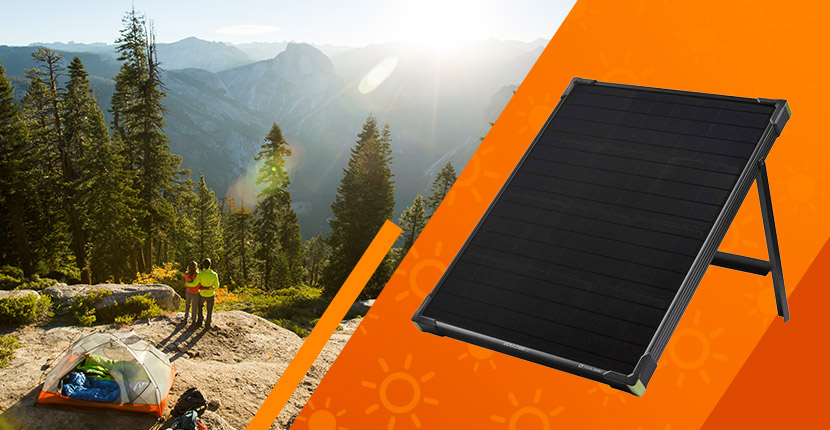Find Your Solar Power Solution at Batteries Plus
- by Bryan Veldboom - updated on 9/15/2021

Solar power is a tremendous energy resource; it's cost-effective, environmentally friendly, plus it works even in remote areas. And yet, most people have no idea how to take advantage of it. Today we'll be fielding some of your most common questions regarding solar power and discussing how you can use solar energy to charge a number of applications ranging from RV batteries to laptops, tablets and phones.
How Do Solar Chargers Work?
In a solar charging system, solar panels collect and convert sunlight into usable energy. This energy takes the form of direct current (DC) electricity, which is used to charge and replenish your battery storage system. When we say "battery storage system" it's just a fancy way of referring to where this energy will be stored. A few different examples include portable power stations, RV batteries and battery backup storage systems.
Do Solar Chargers Need to Be In Direct Sunlight In Order to Work?
Solar panels are most efficient when receiving direct sunlight. They will still work in indirect sunlight or on cloudy days, however, the amount of usable electricity they capture will be much lower.
Solar Power Chargers Available at Batteries Plus
Batteries Plus has a number of solar power systems to choose from. Our Goal Zero products are perfect for charging personal electronics. Simply pair the 20 watt, 50 watt or 100 watt solar panel with the Goal Zero power bank or one of three portable power stations (200X, 500X or 1500X) to gather and store solar energy that you can use to recharge laptops, tablets and phones.
If you're looking for a way to charge the batteries in your RV or camper, check out our solar charging options from Go Power! We have full solar charging kits such as the Overlander and Duralite, complete with all of the equipment you need to power your RV's batteries.
Which RV Batteries Work with Solar Power?
Most RVs will have two types of batteries, a starting battery and a house battery. The starting battery is only used to turn over your engine, while the house battery powers things like fridges, lights and appliances. Your starting battery will charge automatically as you drive, while the house battery requires additional charging. Here's where a solar charging system comes in.
RVs typically use deep cycle, valve-regulated (VRLA) batteries as a house battery. There are three different types of deep cycle batteries: AGM, gel and lithium. All three types are compatible with solar power, however solar panels tend to work best with AGM and lithium types. Since gel batteries are based on older technology, they charge slower than the other options. One other thing to keep in mind is that both gel and AGM batteries are sensitive to overcharging. If you have one of these types, you will need a charge controller compatible with either an AGM or gel battery in order to prevent them from overcharging.
How Much Solar Power Do I Need To Power Appliances in an RV or Camper?
This will depend on the number of appliances, how much power they consume and what size of battery bank you have installed. Here is a basic example:
A typical laptop uses 5 amps of power. If you plan on using it for 8 hours per day, that works out to 40 amp hours (Ah) using this equation: 5 amps x 8 hours/day = 40 Ah. If you're calculating how much power you need in order to run just your laptop for 8 hours over the course of 5 days, you would need 200 amp hours per week.
How Do I Choose a Solar Charger?
Go Power! makes it easy to calculate your solar needs using either this RV solar calculator or Solar Sizing Worksheet . When using the Solar Sizing Worksheet, first you need to identify the DC and AC power appliances and the number of hours each runs per day. Once you've added up your daily power draws/usage (this number will be your "Total Amp Hours"), you can use this number to calculate the "Total Weekly Amps." Just multiply the "Total Amp Hours" per day by the number of days per week that you'll be using solar power. Once you've identified your "Total Amp Hours Per Week," you can match that with a solar kit on the worksheet chart that delivers the amount of power you need.
Shop Batteries Plus for Your Solar Power Needs
Shop or entire selection of solar power solutions, including solar panels, portable power stations and solar charging kits. Looking for additional solar resources? Read about the best solar lights for your garden. Need more info about RV batteries? Read our blog entitled "Starting, Deep Cycle & Dual Purpose: Breaking Down Your RV Battery Options," then shop our selection of RV batteries online.